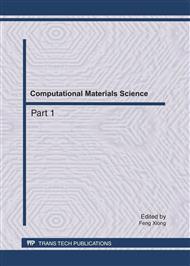p.1438
p.1447
p.1451
p.1457
p.1462
p.1466
p.1470
p.1473
p.1476
Efficient Algorithm of Computing the Shortest Distance of Massive Points Based on Probability and Statistics Model
Abstract:
Through adopting probability and statistics model in the process of computing shortest distance, partition strategy can solve the low efficiency of traditional algorithm. Theoretically the time complexity could be reduced to O(N). In this article main algorithms are provided and the factors of affecting algorithms efficiency are also discussed. Finally put forward some applications of the algorithms in our life and research.
Info:
Periodical:
Pages:
1462-1465
Citation:
Online since:
July 2011
Authors:
Price:
Сopyright:
© 2011 Trans Tech Publications Ltd. All Rights Reserved
Share:
Citation:


